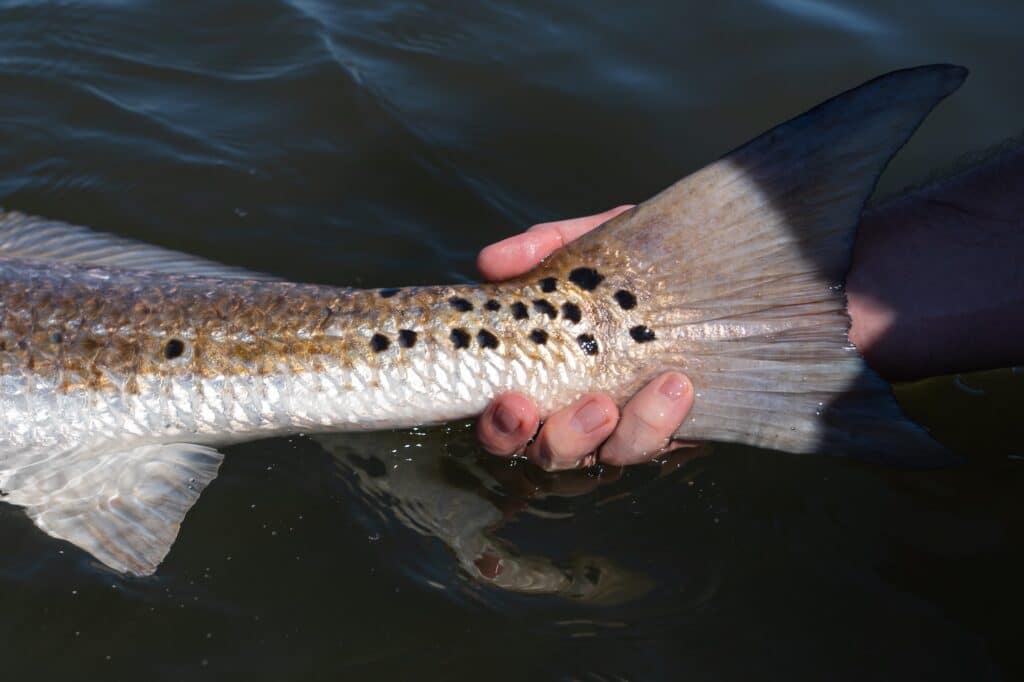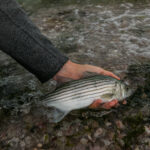
Getting Dirty in Louisiana: Carp Tournament Draws a Crowd
This past weekend, ASGA proudly sponsored the Dirty Carp Tournament in Louisiana — and no, you didn’t misread that.
Photo Credit: Carter Abramson | Trevor Johnson
Every now and then, we encounter something so profoundly out of touch that it surprises even us. Monday was one of those days. Redfish in Louisiana are in trouble again. Can you imagine a world where big redfish will be harvested again in Louisiana for a mere $25 tag to fund a hatchery to grow biologically substandard fingerling redfish? We couldn’t either, but then House Bill 604 arrived, courtesy of Representative Orgeron. Before we dive into this, let us just say that the Louisiana Department of Wildlife and Fish is a fantastic state agency. Their staff is smart and dedicated to sustainable fisheries. We guess that this bill is not coming from them. If what we are about to tell you gets you as angry as we are, do not direct that anger toward the state agency. If that changes, we will let you know. Here is the bill:


So, why is House Bill 604 so bad?
Its science, economic, and resource aspects defy common sense. You will hear a lot from us about this bill over the next few weeks. We will do a deep dive into each issue. Right now, we need to spread awareness about the existence of HB604. Killing bull redfish to fund a private hatchery is the pinnacle of resource abuse.
Hatcheries have never had a positive impact on wild saltwater fisheries in the United States. NEVER. Sure, there have been numerous successes for largemouth bass, catfish, and other common species in freshwater. There have also been disasters on biblical levels, like whirling disease in stocked trout and the decimation of wild populations of trout from the spread of the disease.
Zeroing in on redfish hatcheries, the failures are stark. The Florida Fish and Wildlife Conservation Commission (FWC) has stocked redfish since the 1980s, focusing on estuaries like Tampa Bay and Sarasota Bay. Exact numbers are less clear than in SC or TX, but estimates suggest 5-10 million redfish were released from 1990 to 2020, based on historical reports and comparisons to other states. These are typically 1-2 inch fingerlings, similar to SC, aimed at improving early survival.
A 2016 study (Tringali et al., Fisheries Research) found that hatchery redfish contributed less than 5% to the fishery in Tampa Bay over a decade, despite millions released. This fishery contribution includes sub-adults, so the impact on the adult spawning population (ages 5+) is likely even lower, estimated at 2-3% based on survival trends. Hatchery fish face high mortality from predation and struggle to forage compared to wild fish. Genetic dilution is also a concern. Hatchery fish reduced wild genetic diversity by 10-15% (Bartley et al., 2018), weakening the wild stock’s resilience. Meanwhile, wild redfish populations have declined 15% since 2010 (FWC 2023), driven by habitat loss (seagrass beds down 50% in Tampa Bay since 1990) and red tide events.
South Carolina DNR’s Marine Stocking Research Program tracked stocked fish into the adult population (ages 5+). From 2004 to 2012, they sampled 1,226 adult redfish along the SC coast using longline methods. Only 31 were hatchery fish, which is a contribution of just 2.5% to the adult population statewide. Despite tens of millions of fish stocked, the adult population hasn’t seen a meaningful increase. Wild stocks are still declining, with juvenile abundance down over the last 15 years (SCDNR, 2018). Today, South Carolina may have to go to a moratorium on harvest due to a massive decline in redfish populations.

Let’s take a look at the largest redfish stocking program in the country, Texas. Texas Parks and Wildlife Department (TPWD) runs the largest redfish stocking program, releasing over 115 million redfish fingerlings from 1983 to 2023 across eight bay systems. Recent years average 24 million annually, mostly 1-2 inch fingerlings, with some experimental larval releases.
A 2007 TPWD genetics study found that stocked redfish made up 10-20% of 1-year-olds in sampled bays, showing some survival to sub-adult stages. But the contribution to the adult spawning population (ages 5+) is much lower. It is estimated at 3-5% based on long-term trends. TPWD’s Robert Vega noted that while stocked fish contribute, the impact on adult stocks is limited by high mortality and habitat constraints. Despite 115 million fish stocked, Texas redfish populations have declined 20% since 2010, driven by overfishing and habitat loss.
TPWD brags about 115 million fish, but 3-5% adult contribution is a drop in the bucket. Stocked fish face the same habitat bottlenecks as wild ones. There is coastal development and wetland loss that kill their chances. Competition with wild fish and genetic dilution, 5-10% diversity loss, further undermines the program. Stocking is a feel-good measure, not a solution.
Agencies like SCDNR, FWC, and TPWD tout stocking as a win. But the data screams failure: 12 million in SC, 5-10 million in FL, 115 million in TX, and adult contributions of 2-5%. They’re masking systemic issues like habitat loss and overfishing with hatchery PR.
Let’s get back to HB 604. The redfish hatchery, hoping to benefit from HB 604, had some trouble with its first batch of brood stock. The first attempt to obtain brood stock ended in complete failure. 100 redfish were provided from a tournament. Those fish ultimately died due to a storm-induced power outage at the hatchery. This does not give us a high level of confidence. Unfortunately, it gets worse.
Redfish are asynchronous broadcast spawners. Asynchronous spawning refers to a reproductive strategy where a fish’s egg cells develop at different stages within the ovary at the same time. Unlike synchronous spawners (where all eggs mature and are released in one batch), asynchronous spawners release eggs in multiple batches over an extended period during the spawning season. This allows them to spawn repeatedly, maximizing reproductive output in a variable environment. Asynchronous spawning spreads reproductive effort, reducing the risk of total failure in a single event. This is crucial in the Gulf, where hurricanes or red tides can disrupt spawning. Why does this matter? Redfish spawning aggregations can exceed 3000 individuals. This provides maximum genetic diversity compared to hatchery fish that come from maybe 100 broodstock.
Redfish abundance in Louisiana is estimated at 8.7 million fish, down 60% since 2009 (LDWF 2023). Escapement rates are at 20.1%, below the 30% target. Spawning fecundity has been down 35% since 2004 (LDWF, 2022). Asynchronous spawning helps buffer this, but only if enough bulls survive to spawn repeatedly. HB 604 would also extend the current rebuilding timeline. By how much? Who knows? That would depend on how many were harvested and what the compliance percentage is on tag reporting. Remember, that rebuilding timeline was a highly-debated, volatile topic last year. How could the impacts of this bill on rebuilding not be considered? As an example, whitetail deer reporting hovers around 50%. What do you think compliance would be for a bull redfish electronic tag? We would guess extremely low. We do know that the harvest ban on adult redfish represented 13% of the 37% reduction.
Going back to killing bull redfish is a terrible idea, especially considering the current state of the stock and the freeze event this winter. The final impact assessment of the recent freeze event won’t be available until this fall. Many on-the-water reports from guides and recreational anglers documented that many redfish died. Introducing this legislation after such an extensive event is about as tone-deaf as we have ever seen in fisheries. Having anglers pay to kill these fish to fund a private hatchery to stock fingerling redfish goes far beyond a terrible idea. ASGA will break down each aspect of our opposition to this bill in future blogs. HB 604 has its first hearing on the 16th (see below). We will keep you updated as this bill develops. Harvesting bulls is a dangerous idea and deserves significant pushback from the angling community, whether you fish fly or spin, harvest reds or release your fish. Bull reds are the foundation of this fishery. Follow this bill along the way and be a part of a better future for Louisiana redfish.


This past weekend, ASGA proudly sponsored the Dirty Carp Tournament in Louisiana — and no, you didn’t misread that.

After years of data pouring in from The Albie Project, advocacy, persistence, and support from

This morning, the Connecticut Environment Committee held a hearing on House Bill 6248, a bill

Photo Credit: A striper released in Connecticut waters, courtesy of Mike Querfeld. Connecticut House Bill 6248 (2025
We rely on our members and donations to keep fighting for a sustainable tomorrow in marine conservation.
GIVE THE GIFT OF FISHERIES CONSERVATION THIS HOLIDAY SEASON. SHOP ASGA GOODS THAT FUND FISHERIES RESEARCH & ADVOCACY CAMPAIGNS
JOIN ASGA IN CALLING FOR CRITICAL MANAGEMENT ACTION AFTER YEARS OF SPAWN FAILURES & POOR MANAGEMENT.
By using this website, you agree to our use of cookies. We use cookies to provide you with a great experience and to help our website run effectively. To learn more, please review our privacy policy.
One Response
Kill this bill! There should be no harvest of mature, breeding redfish!